Coneflower - The Ultimate Growing Guide from Proven Winners®
Coneflower is an easy-to-grow perennial with long-lasting daisy-like flowers that attract beneficial pollinators and songbirds.
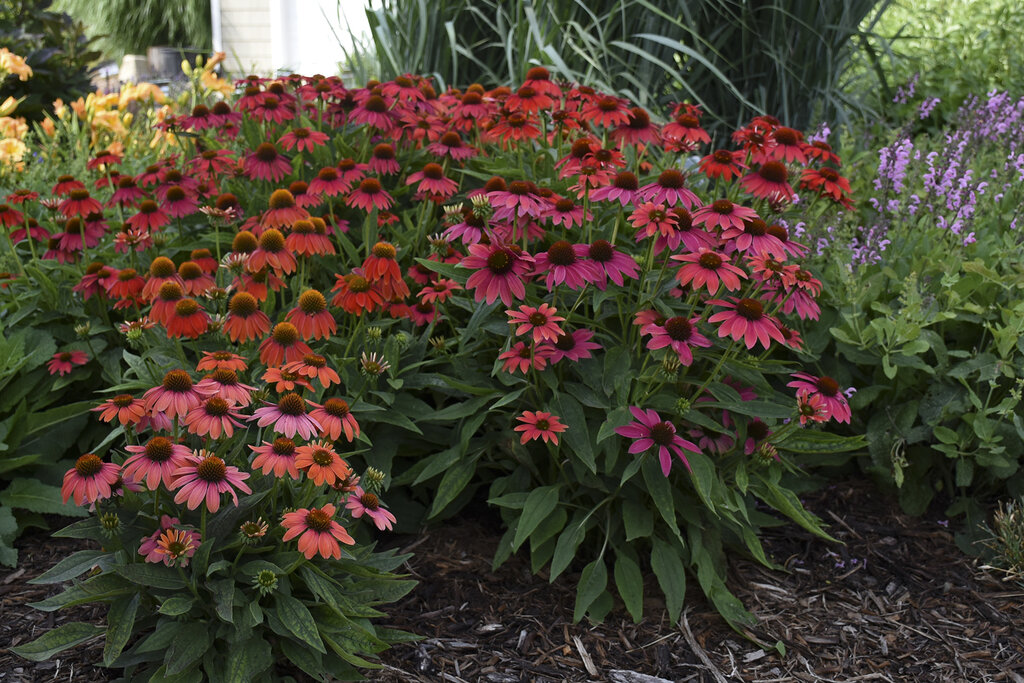 Buy coneflower plants – Order perennials online and have them shipped right to your door
Buy coneflower plants – Order perennials online and have them shipped right to your door
Coneflower (Echinacea) is native to prairies and open woodlands of North America. It is named for the spiny cone-shaped flower center encircled by slender petals in shades of pink, purple or white. Newer varieties come in single and double forms and new coneflower colors such as orange, green, peach and coral. The flower nectar feeds hummingbirds, bees and butterflies, while songbirds feast on the seeds through fall and winter.
Echinacea is known for its medicinal properties as well as ornamental value in the landscape. Hardy in USDA zones 3-9, this herbaceous perennial blooms later in the season, from summer into fall. Echinacea plant makes a great addition to mixed borders, beds, cutting gardens, mass plantings, rock gardens and native landscapes. Plants are deer resistant and have few pests or diseases.
CONEFLOWER CARE & PLANTING
How to plant: When planting coneflowers, choose a site with full sun and moderately rich, well-drained soil. Follow these steps and space plants 1 to 3 feet apart, depending on the variety.
- Loosen soil in the planting area at least 12 inches deep. Dig a hole twice as wide and slightly deeper than the root ball.
- Remove the coneflower plant from its nursery pot and gently tease out roots if potbound.
- Set the plant in the hole with the base level with the soil.
- Backfill the hole with soil and tamp down slightly to remove air pockets. Water well.
Soil: Coneflower is tolerant of rocky, clay or sandy soils, but prefers soil that's rich in organic matter. Good drainage is essential to prevent root rot. For containers, use a high quality all-purpose potting mix.
Watering: Coneflower water requirements can vary depending on the site. Though coneflower is somewhat drought tolerant, it prefers moderate water for best growth and flowering. Allow soil to dry out in between waterings. Irrigate more frequently during heat or dry spells.
Fertilizing: Coneflower does best with little or no supplemental fertilizer. Add a thin layer of compost around the base of plants each spring.
Pruning: Deadhead spent flower heads to prolong bloom time. In late winter or early spring, cut back dead growth before plants break dormancy.
TRY THESE PROVEN WINNERS® VARIETIES
Coneflowers come in an array of colors and sizes. Try these varieties in your landscape:
|
|
|
|
|
See more coneflower plants
CONEFLOWER FAQ’s
Are coneflowers perennials?
Coneflower is a reliable perennial in most USDA hardiness zones.
Do coneflowers come back each year?
Coneflowers are perennials that come back year after year. Native species such as purple coneflower (Echinacea purpurea) tend to be very long-lived.
When do coneflowers bloom?
Most coneflowers bloom from mid to late summer. Some varieties will start flowering earlier, while others may produce flowers into fall.
Does coneflower spread?
This vigorous grower can spread 1 to 3 feet wide, depending on the variety.
Are coneflowers good cut flowers?
Echinacea flowers last a long time in a vase. Display by themselves or with other summer-blooming flowers such as daisies, black-eyed Susan, salvia or hydrangea.
Do coneflowers need sun or shade?
Coneflowers bloom best with at least 6 to 8 hours of full sun. Plants may benefit from some light afternoon shade in hotter climates.
Should you deadhead coneflowers?
Remove spent flowers to prolong bloom time. Late in the season, leave the seed heads to provide food over fall and winter for songbirds.
Where is the best place to plant echinacea?
Provide a sunny site with amended, well-draining soil.
HOW TO USE CONEFLOWER IN YOUR LANDSCAPE
With a long bloom time and adaptability to different soils, there are many ways to use coneflower in virtually any garden.
- Plant in a curbside strip with ornamental grasses and other drought-tolerant perennials such as salvia, catmint and sedum.
- Add coneflower to a mixed border for mid- to late-season color.
- Naturalize in a meadow garden alongside other natives to support insect pollinators and songbirds.
- Use a dwarf variety to edge borders or pathways.
- Plant a smaller variety in a container by itself or with other plants that have similar growing needs.
- Mass a compact variety along a slope for wildlife-friendly erosion control.
- Plant in a rock garden with other tough plants such as tickseed, sedum, speedwell and yarrow.
- Create a cutting garden with coneflower and other long-lasting flowers such as black-eyed Susan, zinnia, dahlia, bee balm, phlox and sunflower.
CONEFLOWER COMPANION PLANTS
Combine coneflower alongside other plants with similar cultural needs of full sun and good drainage.
For a mixed border, plant with:
- ‘Morning Light’ ornamental grass
- ‘Blue Boa’ hummingbird mint
- Uptick™ Yellow & Red tickseed
- Rock ’N Round™ ‘Pure Joy’ stonecrop
For a wildlife-friendly landscape, combine with:
- Cinderella swamp wildweed
- ‘Leading Lady Plum’ bee balm
- ‘Tuscan Sun’ perennial sunflower
- Grape Crush New England Aster
For a late season drought-tolerant border, plant with:
- Color Spires® ‘Crystal Blue’ perennial salvia
- ‘Denim ’n Lace’ Russian sage
- ‘Firefly Sunshine’ yarrow
- Prairie Winds® ‘Apache Rose’ switch grass



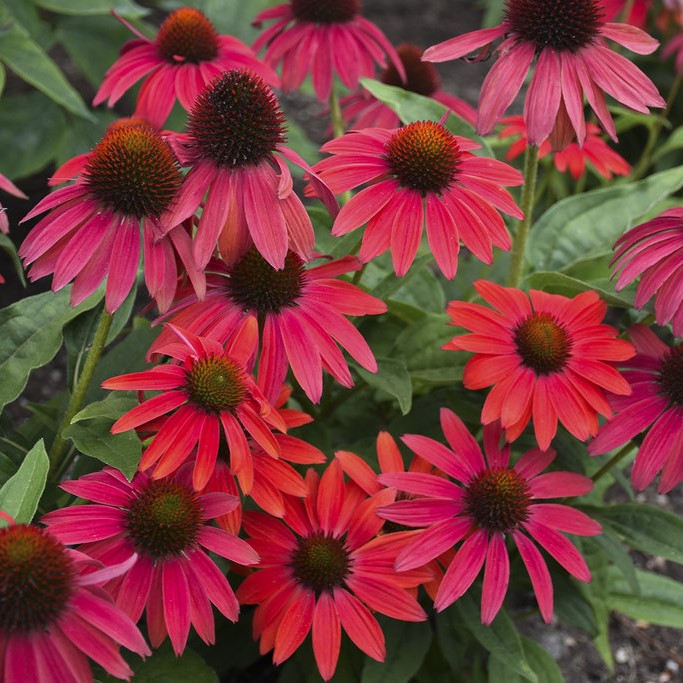
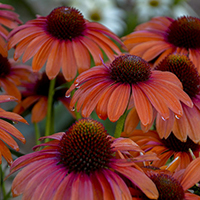 Color Coded® ‘Orange You Awesome’
Color Coded® ‘Orange You Awesome’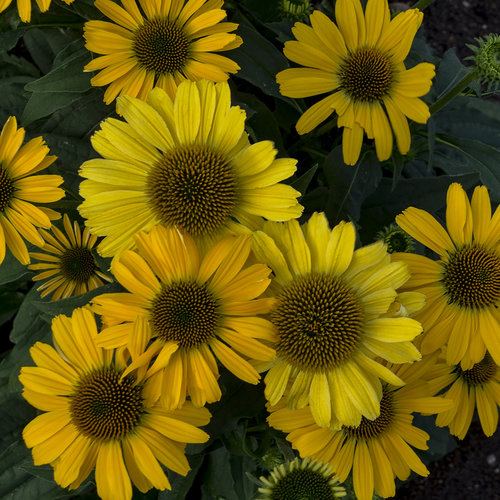 Color Coded® ‘Yellow My Darling’
Color Coded® ‘Yellow My Darling’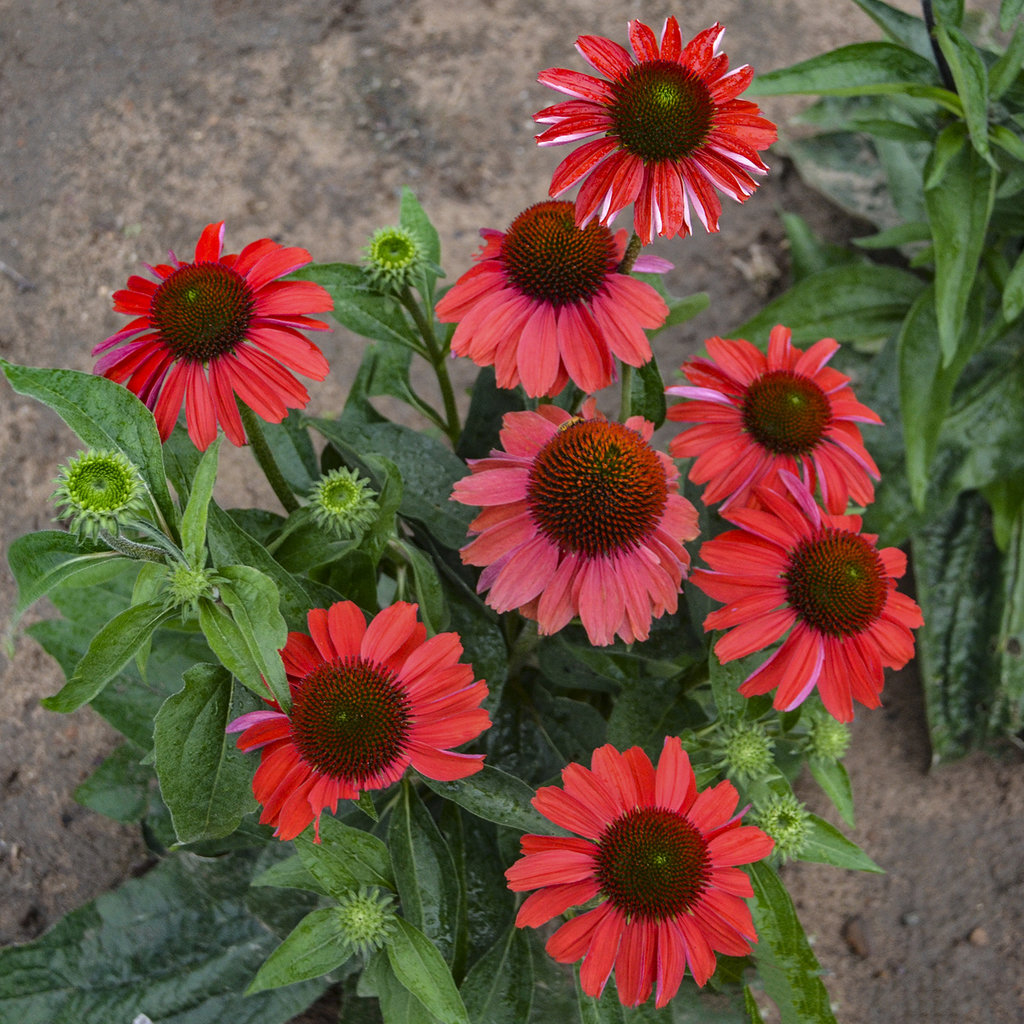 Color Coded® ‘Frankly Scarlet’
Color Coded® ‘Frankly Scarlet’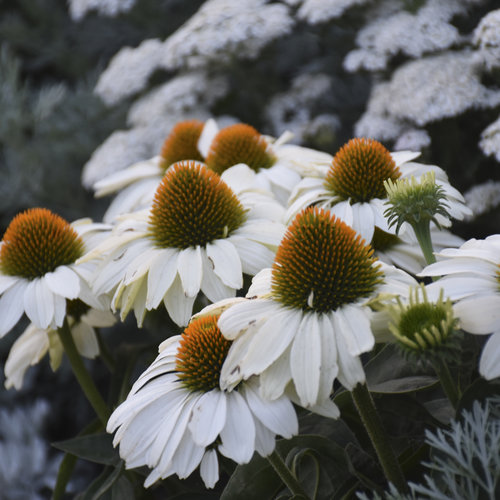 Color Coded® ‘The Price is White’
Color Coded® ‘The Price is White’
